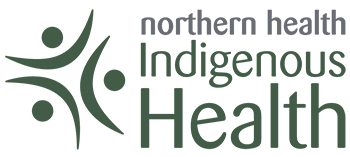As documented in the Truth and Reconciliation Commission (TRC)’s final report, through firsthand experiences in residential and day schools, Indigenous Peoples have historically been mistreated in Canada’s education system.
The TRC includes 94 calls to action and calls 6-12 specifically address education. These calls to action direct the government to remove the barriers blocking Indigenous students’ academic success.
As a result of calls 6-12, both the federal and provincial governments are working to improve the education system for Indigenous Peoples.
Focusing on changes to the curriculum, cultural supports, nutrition, tuition, and transportation here are five supports now available to Indigenous students in B.C.
1. Curriculum
To help incorporate Indigenous knowledge and perspectives in the classroom, the B.C. government created an Indigenous Education Resource Inventory. The resources were created in partnership with Métis Nation British Columbia, the First Nations Education Steering Committee (FNESC), and the B.C. Teachers Federation.
In addition, FNESC is also working to create an Indigenous-led curriculum, including the creation of an Authentic First People’s Resource Guide.
2. Cultural Supports
Starting in the 2019/2020 school year, the B.C. government collaborated with Indigenous communities to incorporate community input into how educational services are delivered.
3. Nutrition
CommunityLINK is a program funded by the B.C. provincial government. The program provides over $53 million in funding across the province each year for 60 school districts. The program aims to support “vulnerable students” with services like meal programs for both Indigenous and non-Indigenous students.
4. Tuition
It is a common myth that every First Nations person has access to free post-secondary education in Canada. The federal government, however, has created several programs to assist Indigenous students to access post-secondary education. Some of these programs include, University and College Entrance Preparation Program (UCEPP), the Post-Secondary Student Support Program administered through Indigenous Services Canada, First Nations and Inuit Youth Employment Strategy, and bursaries that can be found by using the Indigenous Bursaries Search Tool.
Indigenous Health – Northern Health also offers Post-Secondary Student Awards to help support Indigenous students in B.C. The Northern First Nations Health Partnership Committee initiated a post-secondary student award opportunity for Indigenous students studying in health-related disciplines in Northern BC.
The award donors (Indigenous Health – Northern Health and the First Nations Health Authority) provide these awards to illustrate their commitment to implementing the Northern First Nations Health and Wellness Plan. They work in close partnership to enhance the health and wellness of Indigenous Peoples in Northern British Columbia and would like to support students who are also invested in this goal.
For more information, contact your school's financial aid office.
5. Transportation
In 2018, the federal and B.C. provincial governments, along with signatory First Nations, signed a Tripartite Agreement (BCTEA). The agreement supports and benefits both urban indigenous students as well as those still living in community including transportation services.
As part of the tripartite agreement, there is a $3.8 million federally funded First Nation Student Transportation Fund for First Nations students who attend B.C. public schools. These funds, which were introduced in the 2019/2020 school year, are used to eliminate rider fees, while also ensuring service improvements and cutting down the time it takes for students to get to and from school.
Also, the federal government has provided a one-time allotment of $1.7 million for First Nations schools with a commitment to providing $1 million for busses annually. Moreover, according to the B.C. government funding for the annual transportation budget has also been increased to 1.3 million for students who live in community and attend public schools.

